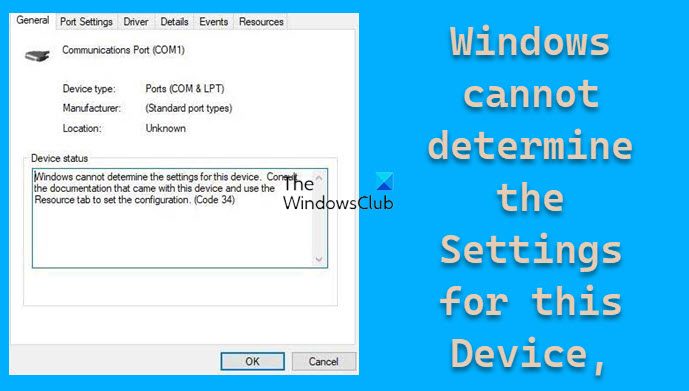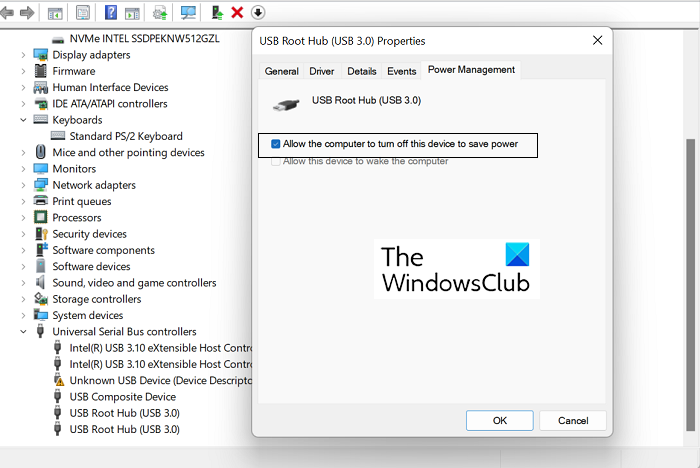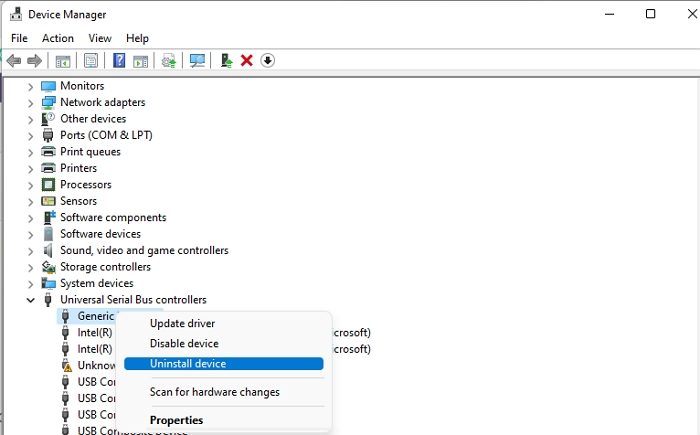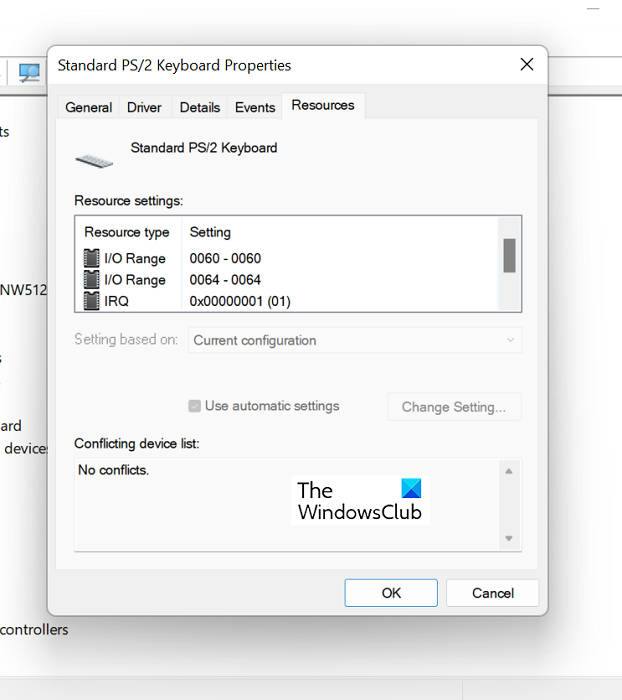Device Manager Error Code 34 is one of the more common errors you may encounter while checking up on your computer’s devices. With an error message, Windows cannot determine the settings for this device this error mainly pertains to faults and issues around your USB devices and communication ports, and can be remediated by some manual configuration. Many devices on Windows use resources to execute what they are supposed to do. While Windows can automatically determine the resource for each of these devices, in case it fails, you get an Error Code 34. Full Error Message includes—
Windows cannot determine the settings for this device. Consult the documentation that came with this device and use the Resource tab to set the configuration. (Code 34)
A resource is binary data that you can add to a Windows-based application’s executable file. It can be in the form of IO, Memory, or anything else.

While Windows can figure out and uses automatic settings, it is possible to configure it manually if it doesn’t work. However, you will need a device manual configuration. Once you have configured, reboot your computer, and then check if it is working fine.
Error Code 34, Windows cannot determine the settings for this device
The error message states that you should check the hardware documentation when faced with this error or contact the hardware vendor for instructions on how to configure your device to not receive this error anymore. Here are some of the manual configurations you can perform to try and fix this error.
- Configure the device
- Reinstall the device
- Check for a Resource Conflict
1] Configure the device

In the case of most devices, your computer automatically configures them upon installation. But if you are facing Error Code 34 with any device, it may require some manual configuration work. Here’s what you need to do for the same:
- Open the Device Manager page on your Windows PC
- Expand the Universal Serial Bus controllers section, right-click on ‘USB Root Hub (3.0)’ and click on Properties
- Visit the Power Management tab and check the Allow the computer to turn off this device to save power box. Click on ‘Ok’ to save this change
- Now, locate the problematic device from the list of devices on the Device Manager page and open its ‘Properties’ page
- Visit the Resources tab and enable the Automatic Settings option. If that option is greyed out, then your device doesn’t require any manual installation and thus, you’re required to implement one of the other two fixes
- From the ‘Settings based on’ drop-down, select an appropriate hardware configuration for this device
Save these changes and check if your device is still facing the same issue with its Settings.
2] Reinstall the device

Next, you could try and reinstall the device causing this error via the device manager. It is possible by doing this, and then rebooting your computer can help get rid of this error. Here’s what you need to do:
- Open the Search Bar on the Taskbar and type Device Manager
- In the Device Manager window, locate the device with which you’re facing this issue
- Click on its category to expand it, right-click on the device’s name, and click on the Uninstall option
- To complete the process, confirm the warning dialog box that subsequently shows up
You will then have to reboot your computer and open the Windows Updates section on the Windows Settings page to reinstall the driver you just got rid of. Do so and redetect your driver to check if the error persists.
3] Check for a resource conflict

You can also check if existing resources conflict with your device driver’s functionalities.
- Open the Device Manager as you had in the solution above
- Then, expand the category of the device that has been causing this issue and right-click on it to select the Properties option
- Then, visit the Resources tab
- Check if there is a question mark next to any of the resources enlisted in the Resource Settings section, and if so, select it and assign it to the device
With some resources, you may be required to change their configurations using the Change Setting or the ‘Use Automatic Settings’ option. Do so, and when there are no unresolved resources left, check if the issue has been solved.
Does reinstalling Windows fix driver issues?
If you have been facing some consistent driver issues with no reliable fix for them, you may have contemplated reinstalling Windows on your computer to put your driver configurations back in place, and you would not be wrong to do so. Resetting the Windows OS on your computer will result in a fresh, new version of Windows with a new set of drivers fully installed.
Read: Complete list of all Device Manager Error Codes along with solutions
How to fix Windows cannot load the drivers required for this device?
Another common error with the Device Manager is Error Code 38, which states, Windows cannot load the Device Driver for this hardware because a previous instance of the Device Driver is still in memory. There are several solutions that you can implement for the same, the most common ones being uninstalling and reinstalling drivers from the manufacturer’s official webpage, running a Hardware and Devices Troubleshoot, and running a clean boot.
These are some of the fixes you can implement to get rid of Error Code 34 with any of your devices. I hope it was of help.